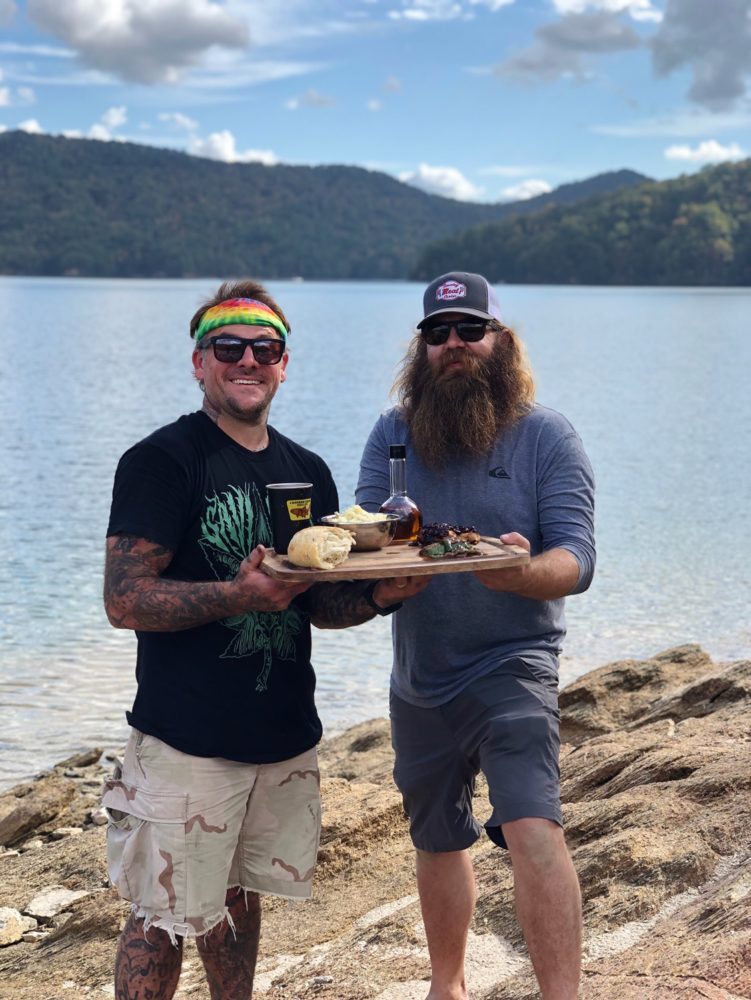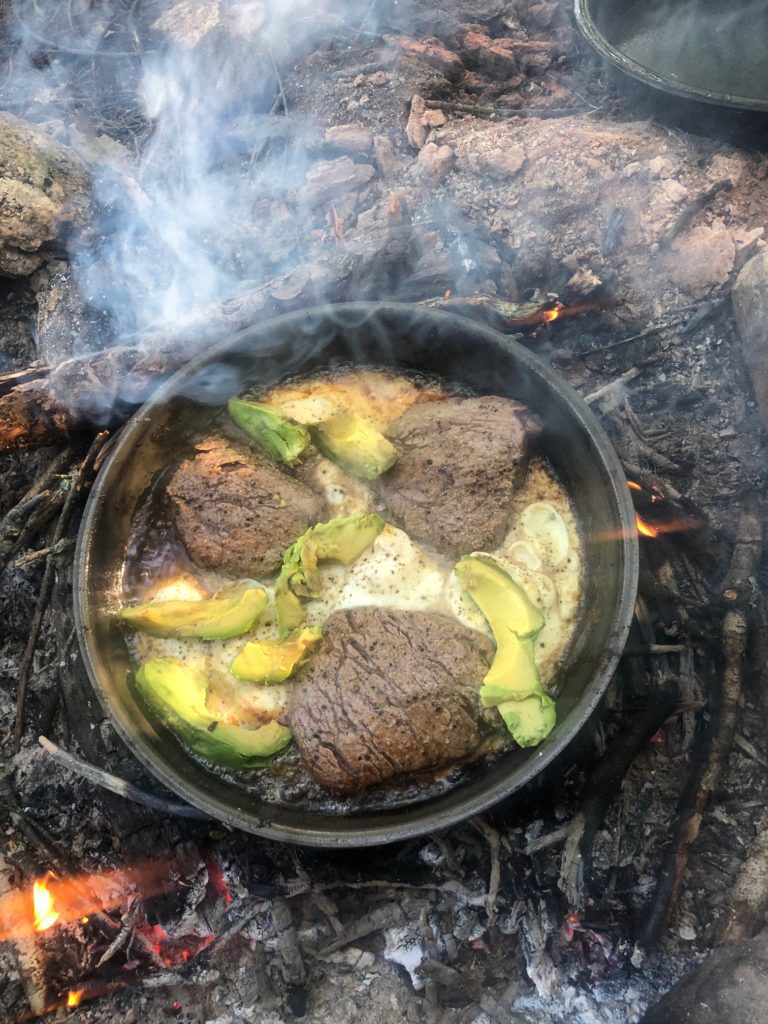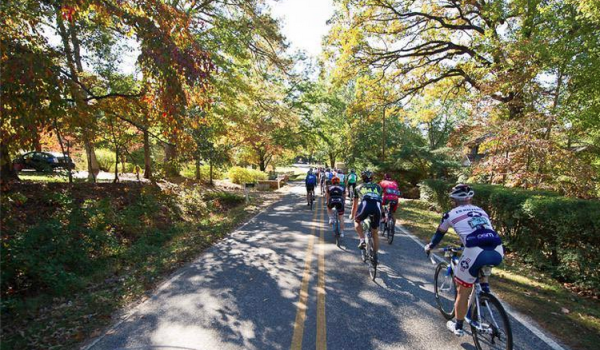Photos and Story by Clint Keels
We are closing the door on Fall up here. A Gregorian rush of endorphins will set in next month as the calendar hits the final page.
Winter holds the promise of snow, (more of a) no school – no rules adventure for kids, cranberry and popcorn garlands for the birds, and high hopes Punxsutawney Phil don’t see his shadow and gets spring to us a little early.
Managing the time and isolation often associated with winter is a trial for some and a season of thriving for others. Attractions and interests shift with wardrobes, demeanors and schedules. An innate drive exists within humans to provide and collect for their tribe. You see it in hunters and fishermen, farmers and makers, and butchers and bakers.
Even here in good ‘ole 2020, the human composite and those built in drives haven’t gone anywhere and further proves, every single thing in this life is connected.
One way to manage those connections and force out the cold is with heat and light. A wonderful way to put those sources to work and derive a little edible joy from them can be found in cooking with wood.
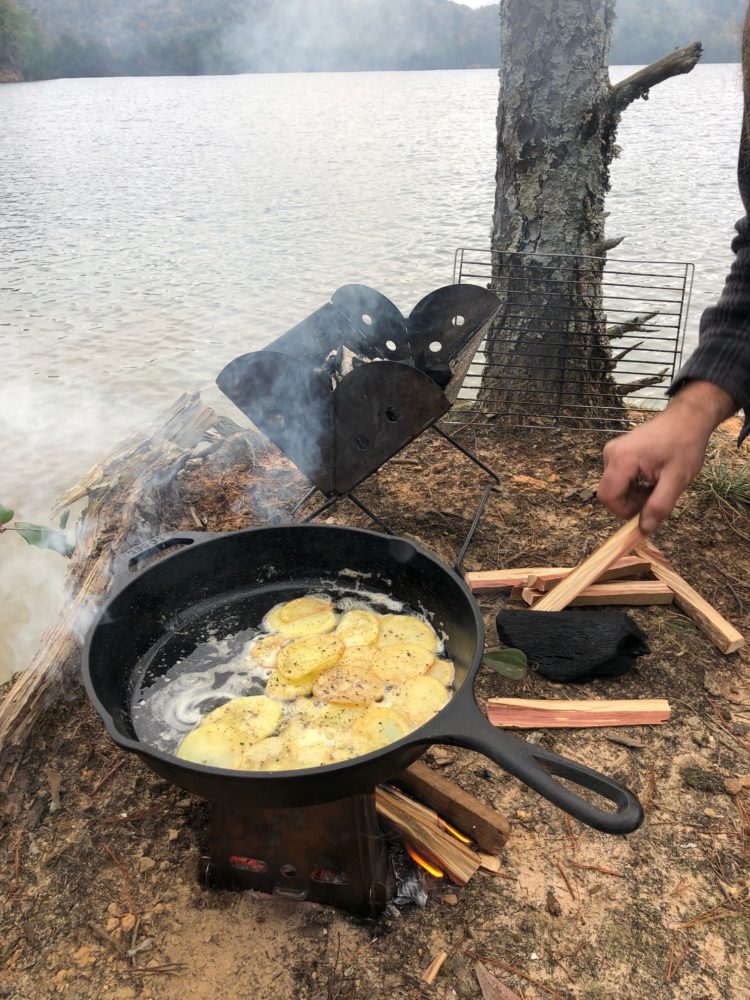
Cooking with wood is an age old practice serving communities around the South (all of Earth, too), from the hills of Appalachia to the swamps of the Lowcountry. It may be huddled around a dug out sand pit along the coast helping toss burlap sacks of fresh raked oysters over coals to steam, up on a ridge somewhere in Eastatoee rendering fat off a hog flank in a cast-iron pot, or grilling in the yard.
Come what will, there is a dutiful reverence found using the primitive method of fire to cook and prepare food. A real relationship is hardwired in the fabric of your efforts. It is a managed and spirited errand requiring the proprietor of flame to stay keen and on task.
Fire in general depends on you.
In this case; to not undercook, to not overcook.
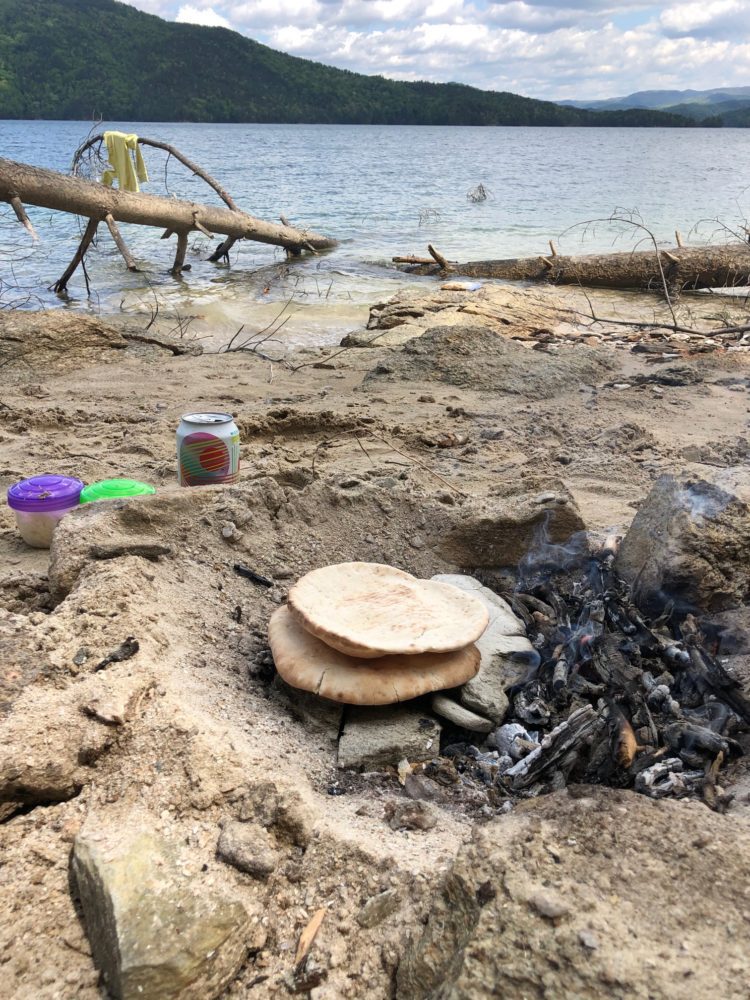
Knowing just where to maneuver coals around a dutch oven half buried in ash so as not to scald up the contents.
Having the patience to wait for bigger chunks of wood to burn down that hold glowing waves of even heat.
These are the nuances aiding in taste, final products, and the conservation of materials.
A wonderful introduction to wood cooking can be done right in your backyard on a kettle grill.
It begins with ridding the stash of charcoal briquets and fluid soaked pieces of pressed who knows what and starting over – start gathering.
That’s right, you can use your surroundings to procure, preserve, and provide all in the name of the natural to do your part in the circle of life.
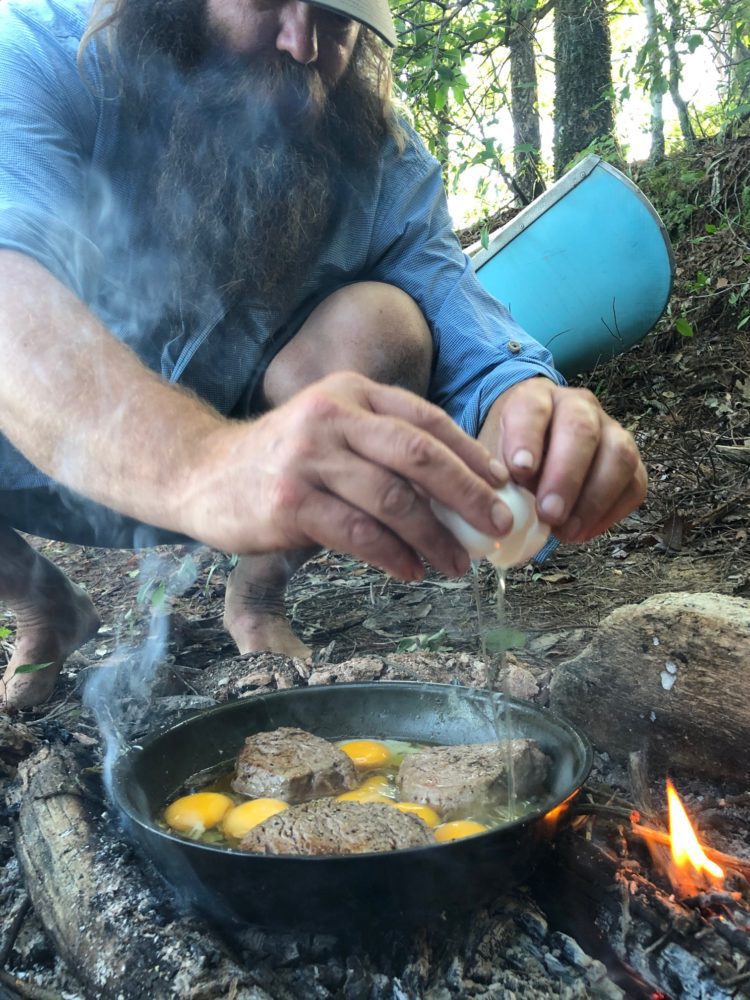
Start by collecting small, dry twigs to get your fire going and give them a good bend test. Moisture equals flexibility, so should the pieces bend instead of break with minimal pressure, throw it down and go find yourself something else.
A quick survey to the ground or a glance for fallen branches hung up in bushes or the low-lying limbs of other plants and trees is a great place to search. Pieces found suspended and disconnected from origins are typically surrounded by some sort of air flow drying them out, letting that last bit of retained moisture go.

A good rule of thumb in the collection of materials would be using hardwood when available. Oak, Ash, Hickory, etc. – any of these are better than using pine or shrubs. However, in a pinch, they will work, but it is important to let them reduce to coals prior to cooking anything exposed over them (grilling meat over an open pine flame would not be ideal). Pine is great for campfire heat and smoke signals, while shrub scrub is just a futile chore to maintain – treat them as such!
As the fire grows, so should the pieces of wood. The build is gradual and what is being cooked will dictate size and amount.
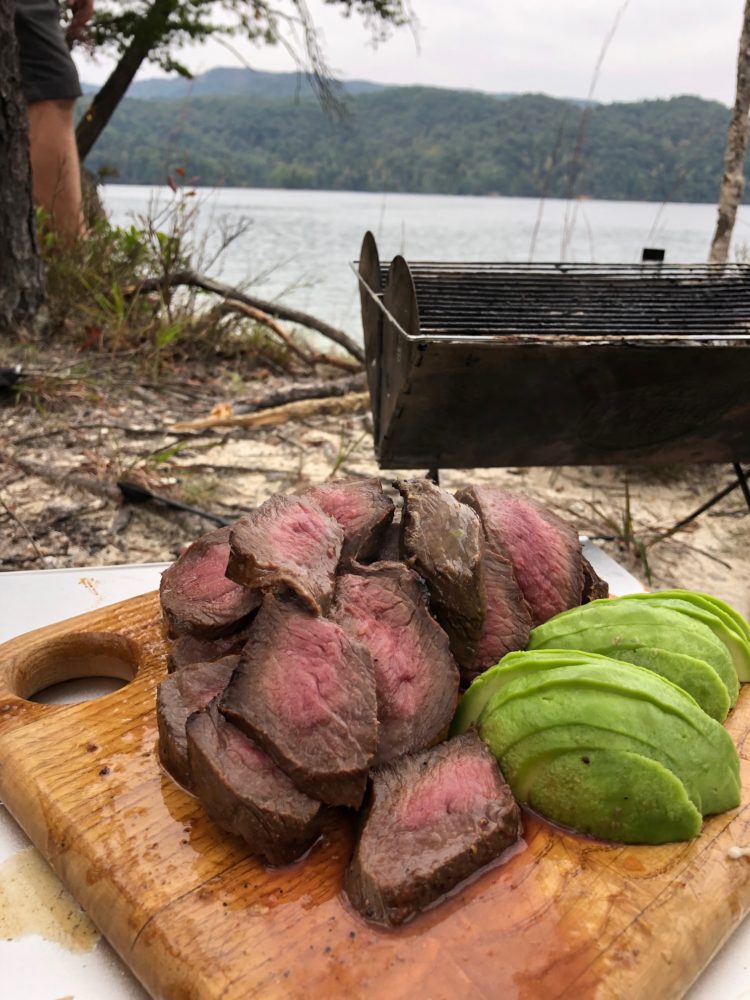
When cooking steaks, chicken or meat of any kind over an open flame, using split log size pieces of oak or hickory will work great. Burn them to the brightest orange possible. That heat ensures a good sear, an even cook, and won’t leave food tasting like pungent clouds of wet smoke, yet still achieving the goal of wood cooked flavor.
If a contained dish is to be prepared in a pot or boiling water, the same applies. The more “heavy coals” the better. Coals can always be moved around and leveled out with pokers or sticks to accommodate whatever the dish may call for.

The process can be somewhat forgiving and in time, your eyes will speak fluent in the language of flame.
If cooking with wood is a new experience for you, let it be a consuming one.
There is much more than just meats and vegetables. Breads, desserts, soups, and much more can all be cooked over wood and the journey to the outcome is one just as memorable.
Cooking with wood is as just as much a part of us as walking or adapting to seasons.
This winter, grab a friend, a family member or take the solo journey inward and let the gift of fire feed you and your loved ones.
